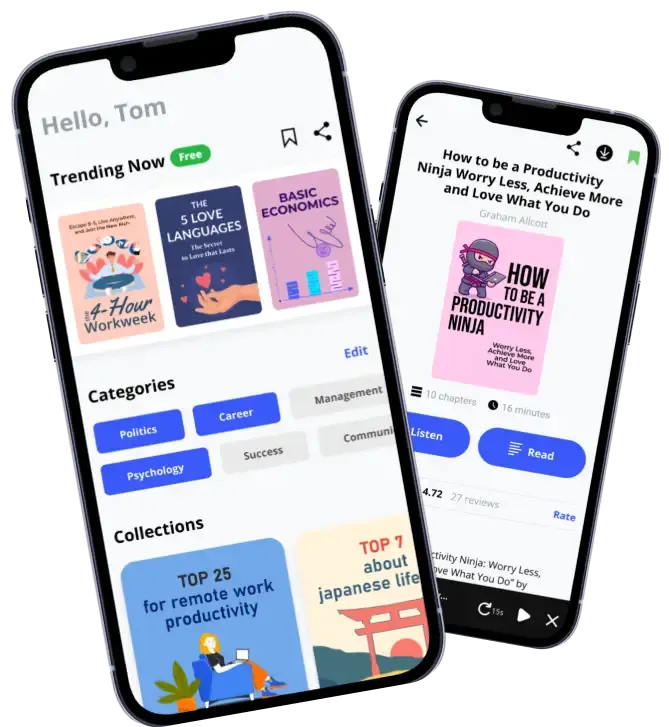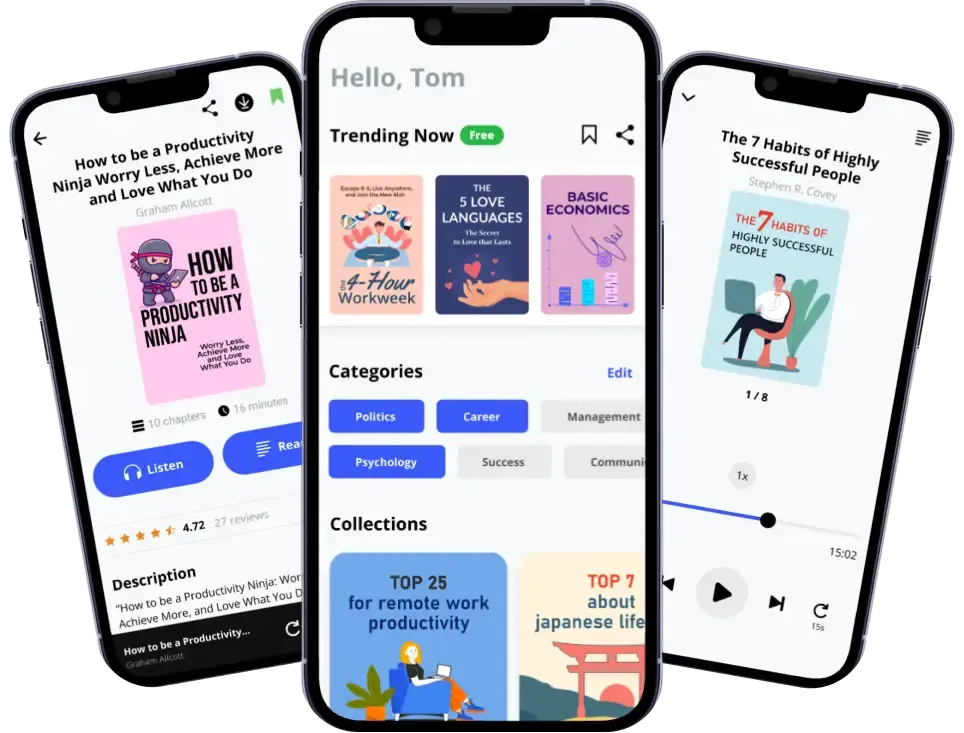Of course, if you've engaged in any creative activity, you'll feel freer and more confident in creating or adapting something new. So, let’s explore how to enhance your creativity through specific techniques and lifestyle choices.
Whether we like it or not, life is filled with obstacles to our personal development. Creative problem-solving not only helps you become more robust and original in addressing issues. It also increases the chances that the problem won’t reappear in your life. Here, we collected some tips to boost creative problem-solving. If you enjoy this article, check out our summaries of Creative Confidence and Creative Superpowers.
1. Create your creative signature in life
To develop a creative mindset, you’ll need to rethink problems and take some well-calculated risks. Creative people do not shy away from challenges; they can handle uncertainty and are always eager to learn something new. It starts with a conscious decision to tackle problems from a new perspective.
Your journey and creativity don’t mean you have to start from scratch or be some kind of genius. It’s about understanding your unique perspective and creating your creative signature, no matter how quirky or unfinished it may seem. Learn more about this in the Creative Confidence summary.

2. Take walks and unplug your mind
After reading this article, take a walk, but do it right and fully immerse yourself in the process. You need to get into the right mindset and be ready to listen to everything around you. Try leaving your headphones at your desk and look around. The world around you can be an exceptional source of inspiration.

When you step outside, focus on the things around you, directing all your attention to your senses. Find a purpose for your walk, such as finding the answer to a question that’s been bothering you. Start walking and clear your head — it’s a way to welcome new ideas. Finally, find someone to share your experience with, from feelings to conversations, and perhaps this will help you find the long-awaited answer.
3. Boost your creativity through fatigue and visual clutter
For some people, getting bored is necessary to unlock their creative confidence and potential. When bored, your brain starts generating ideas left and right due to the lack of stimulation. So, when you have moments of boredom, use them to improve your creative thinking skills. For example, you have a canceled meeting and don't know what to do instead.

Don’t be afraid to create clutter. Visual clutter, not the kind where your desk is covered in used cups and cookie crumbs with chocolate wrappers. Take this opportunity to hang a few posters or photos and place small plants or other decor. This way, you’ll have little things that catch your eye and stimulate your brain to generate new ideas unconsciously.
4. Expand your thinking by challenging assumptions
For humans, analyzing, assuming, and pondering questions are daily activities. Changing assumptions broadens your thinking. You may often find yourself looking at things the same way as everyone else but seeing something different. Many creative thinkers get their most original ideas when challenging and overturning the obvious.
Sometimes, an assumption has a false face, perceived as something unshakable, as a truth that cannot be contested. Problems are often laced with assumptions that hinder creativity and, of course, problem-solving skills. To change assumptions, formulate the problem, list your assumptions, and debunk your fundamental beliefs. Write down various perspectives that might be helpful and as many useful viewpoints and ideas as possible.

5. Try the Think Bubbles technique
Think Bubbles is a graphic technique for organizing your thoughts that creates a tangible, physical picture of how your mind tackles a challenge. Think Bubbles allows you to record, store, and manipulate information about the challenge in various ways. It also helps you see the interconnections between the different parts of the task.
When you organize your separate thoughts on paper, they immediately acquire a new identity. This new identity can be assessed, developed, and resolved. Once you project your fuzzy mental images onto paper, the process of evolving the idea can truly begin. Since the map is created to help you communicate with yourself, it’s okay if the interconnections between elements are unclear to everyone but you.
6. Master the SCAMPER technique
When your imagination is empty, take an existing item and turn it into a new idea. Remember that everything new is just an addition or modification of what already exists. Use SCAMPER, a checklist of idea-spurring questions.
The technique stands for Substituting something, Combining it with something else, Adapting something to it, Modifying or magnifying it, Putting it to some other use, Eliminating something, Reversing or rearranging it. To use SCAMPER, identify the problem or topic you want to think about. Ask SCAMPER questions about each step of the challenge or topic and see what new ideas emerge. The technique helps you transform and refine your ideas, making the creative process more structured and productive, and improves problem-solving skills.

7. Explore the Lotus Blossom technique
People need to have a broad view of problems. It’s essential to know goals, themes, and sub-themes to generate meaningful ideas. Yasuo Matsumura of Clover Management Research in Chiba City, Japan, developed the Lotus Blossom creative thinking technique to help us do just that schematically. Lotus Blossom Tesuque plays on a central core idea surrounded by eight empty boxes or circles, and the task is to characterize each of the eight sides.
Considering in more detail, the idea is to start with a problem or idea and expand the theme until you create several different entry points. In the Lotus Blossom, the petals, or themes, around the core of the flower gently peel away one by one, revealing a key component or sub-theme. This approach is applied in increasingly broader circles until the topic is thoroughly explored. The group of themes and sub-themes developed in one way or another provides several possibilities. If you are interested in learning more creative-thinking techniques, Thinkertoys is a real gem to boost your creativity.

Thinkertoys
Creativity is an extremely crucial link in life, especially in problem-solving. Creative problem-solving examples can be practiced at work, as people spend much of their lives there. For instance, in the original search for research materials, the urgent refinement of a project, or adapting to a new route on the way, it all depends on the type of activity. As you can see, it doesn’t matter whether you’ve engaged in art before or not; you have every chance to improve your creativity and make your life better. Find the technique that suits you best and allows you to go beyond your everyday thinking. Creativity not only helps with problems. It can make your life brighter and fill it with more meaning and faith in the impossible.
Сredentials:










